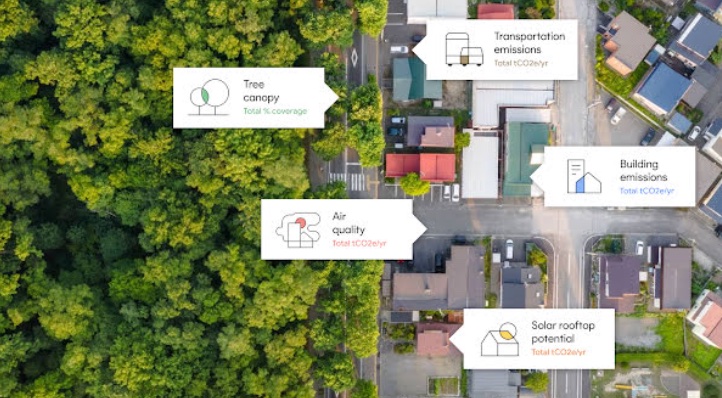Google’s stance on sustainability has always been extremely positive, so much so that it has become an integral part of who they are as a company. As is stated on their official site page on sustainability, “We unify our practices, partnerships, and products around a single mission—to foster sustainability at scale.”
Thankfully this is not all talk. Google has adopted a number of changes to the way their search engine works, changes that put sustainability at the forefront of the average Google-user’s mind.

Some of these new features include an automatic carbon footprint analyzer that chooses the greenest options for you, be it flights, hotels, driving routes or appliances. Incredibly, the analyzer is so advanced that it gathers information pertaining to a particular flight’s carbon output per seat; a hotel’s green practices (waste reduction, water conservation etc), and whether or not they are Green Key or EarthCheck Certified; the greenest and most cost-effective routes to drive; and even the cost-effectiveness and sustainability ratings of energy intensive appliances like water heaters and furnaces.
Now, all these features and services are great for the user, but what about big-picture sustainability?
At their Google Cloud Sustainability Summit, which occurred near the end of June 2022, Google announced that they would be launching a sustainability platform for their custohttps://earthengine.google.com/mers to use to boost their own sustainability initiatives. The platform would grant users access to the Google Earth Engine, a tool previously only accessible by scientists and nonprofit organizations. The aim is to give customers the ability to extrapolate how their company’s actions affect not only their immediate marketplace, but the world around them.
Furthermore, Google has been using their research into artificial intelligence to optimize the efficiency of traffic lights. The research, which was piloted in Israel, managed to predict traffic conditions and improve traffic light timing so well that they saw a 10 to 20 per cent reduction in fuel consumption and intersection delay time. In the future, they hope to expand this operation into Rio de Janeiro, and hopefully further, should it continue to see success.
While Google has accomplished a great deal in their quest for a more sustainable future, their use of wording may be slightly misleading for some, in particular, their use of the term “carbon-neutral,” especially as it pertains to one of their greatest achievements: Carbon Neutrality since 2007.
What most people don’t realize is that carbon neutrality doesn’t mean that the company in question produces no carbon, or that they remove the carbon they produced from the atmosphere; it means they are offsetting their carbon output by investing in green initiatives, purchasing green energy and taking other actions that purportedly reduce other carbon outputs by as mush as or more than their own. By that definition, according to a report by Dezeen, Google has certainly been carbon neutral, but they have not been carbon net-zero (removing the carbon they produce from the atmosphere). In reality, the carbon that Google has produced since 2007 has accumulated to as much as 20 million tons!
Find more information on their efforts for environmental sustainability on Google’s Sustainability Webpage. [GWL]


